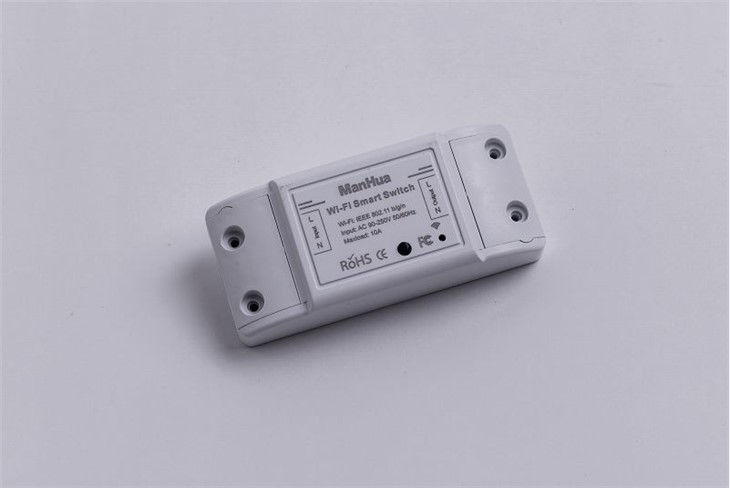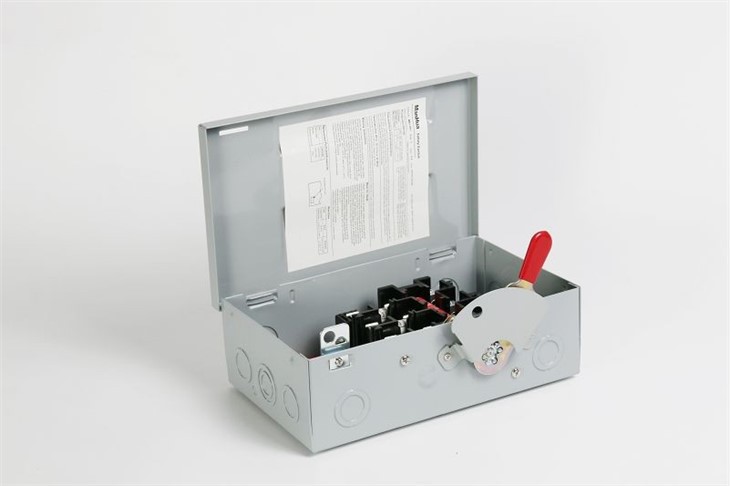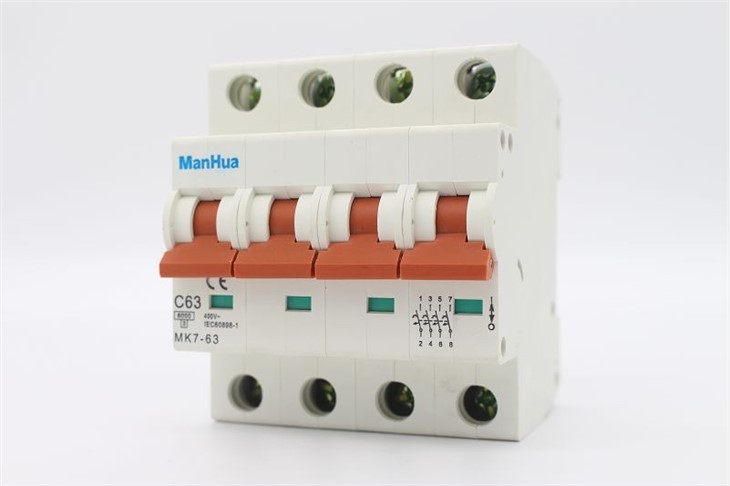Q: How do safety switches work?
A: On a normal power circuit, the current flowing to an appliance returns through the neutral wire. If the circuit is compromised, the electricity can leak to earth through a person in contact with the appliance, causing death or serious injury. A safety switch detects the loss of power from the circuit, and cuts the supply of electricity in as little as 30 milliseconds – 0.03 seconds. Importantly, this response time is faster than the critical section of a heartbeat, and therefore significantly reduces the risk of death or serious injury.
Q: I have circuit breakers. Is that the same?
A: Circuit breakers and fuses are designed to protect the appliances and electrical fittings in your home. They do not protect human life, and will rarely shut off the power in the event of electric shock. Only safety switches will cut the power to a circuit in the event of earth leakage. Only safety switches can save lives and prevent injuries.
Q: How do i know if i have a safety switch?
A: Safety switches have a “test” button on the front face. If the devices in your switch board do not have a test function, they are probably circuit breakers rather than safety switches. You should use the test button several times each year to test that the safety switch is working properly to cut the power. To minimize inconvenience, this can be done at the time clocks are adjusted at the start and finish of daylight savings time. Home owners can also take advantage of any power outage to test their safety switches, after the power is reconnected but before resetting their appliances.
Q: I have a safety switch. Am i protected?
A: Many homes have safety switches on the power outlet circuits, and some have safety switches on the lighting circuits. But in most homes, other circuits such as pools, air-conditioners, hot water systems, and stoves are not protected. For the highest possible level of protection, you need a safety switch on every circuit. A safety switch should always be considered a secondary safety response; it is not a substitute for good old-fashioned common sense around electricity. A person who receives an electric shock from a circuit protected by a safety switch may still feel the current for an instant, and experience pain and shock. However, they are much more likely to survive than they would if the circuit was unprotected.
Q: How many safety switches do i need?
A: While the laws in each state and territory differ we recommend that ALL circuits in ALL homes be retrofitted with safety switches. These circuits include, power points, lights, stove, hot water system, pool, air conditioner, etc.
Q: Are safety switches expensive?
A: A licensed electrician will need to install your safety switches to ensure your house is protected correctly. Generally, you would be looking at paying a standard electrician’s service fee for the service which is ordinarily in the vicinity of a few hundred dollars. Some homes, dependant on the quality and size of their switchboards may require upgrades which would increase that cost. Contact your local licensed electrician for a definitive quote.
Q: How reliable are safety switches?
A: Under each state Electricity Act, a safety switch is a declared article. This means that a manufacturer must submit a formal test report on the operational characteristics of the safety switch. This report is then compared to the standard for compliance. Once satisfied, an approval is then issued. This approval must be marked on the product and is then able to be sold. To meet this need for testing is quite onerous and therefore the need to ensure quality and reliability is highly desirable by the manufacturers.
Q: Do i have to ‘test’ safety switches?
A: Safety switches need to be tested regularly to ensure the mechanism works freely. Testing should be done every three months. As a guide, you should test them when you receive your electricity account. Testing the safety switch is really easy, simply push the button marked ‘T’ or ‘test’. The safety switch should trip and reset by closing, job done. Be aware that some appliances will need to be reset after this test, such as clock radios.
Q: What happens if i cannot reset the safety switch?
A: This may mean that there is an inherent fault on the circuit and will therefore need the expertise of an electrician to inspect and repair this situation.
Q: How long will a safety switch last?
A: Under the current standard, a safety switch is manufactured to last for a period of 4,000 tests. We encourage home owners to test their switches every three months which indicates that unless there is a significant problem with a device, they should last a lifetime.
Q: What is a general duty safety switch used for?
A: General duty safety switches are used in residential and commercial applications. They are suitable for light duty motor circuits and service entrance applications. Fusible cartridge and non-fusible switches are available.
Q: How do safety switches prevent electrical accidents?
A: Safety switches can prevent electrical accidents by shutting off power when they detect an imbalance in the electrical circuit. This can happen if someone comes into contact with water and electricity, or if there is a faulty power point, wiring, or electrical appliance. Safety switches protect you from electric shock. They turn off the electricity within milliseconds when a current leak is detected.
Q: What are the installation requirements for safety switches?
A: Safety switches should be installed on each sub-circuit, including any that supply fixed electrical equipment like hot water heaters and air-conditioners. In addition, the operation of the safety switch must not be affected by electrical equipment connected to the circuit that may distort the AC waveform.
Q: How often should safety switches be tested and maintained to ensure they are working correctly?
A: Generally speaking, switchgear testing should be completed semi-annually with a visual inspection and infrared completed annually. There may be some factors that would warrant more frequent testing, such as equipment issues or deterioration, manufacturer defects, or high reliability requirements.
Q: Can safety switches protect against all electrical hazards, or are there limitations to their effectiveness?
A: Safety switches can prevent electrocution that could be harmful or potentially fatal with no safety measures in place. During electrical leaks, overloading, short-circuiting, or other problems in the electrical system, safety switches will detect abnormalities and automatically shut off the electricity immediately. However, safety switches only work if they are connected to the faulty circuit and are working properly
Q: How do I find a safety switch in my house?
A: You will find it in your switchboard (usually outside a house. In a unit, it might be in your hallway, kitchen, linen cupboard or in a shared area, such as a 'common property' garage or power room). The switchboard is typically located near the power meter at the front of your home. In some homes, the switchboard may be located in a cabinet or cupboard. Safety switches look slightly different on each switchboard but always have a 'T' or 'Test' button.
Q: What are some common causes of safety switch failures and how can they be prevented?
A: If during the test your safety switch didn't make a sound and didn't switch off any lights or appliances, then it has failed. Contact your electrician to have it checked immediately as you will not be protected from electrical faults. Reasons your safety switch might trip:
overloaded power sockets or power boards.
faulty appliances.
faults your home wiring.
water in the walls or ceiling affecting the power circuit
Q: What should you do if your safety switch trips frequently or fails to operate correctly?
A: If you find the appliance causing the tripping, keep it unplugged and ensure a qualified appliance repair technician takes a look at it. If your safety switch is still remaining on 'OFF', or keeps tripping, give a licensed electrician a call and they can assess the problem.
Q: Are safety switches mandatory in all states and territories of Australia?
A: By law, safety switches for power points and lighting circuits must be installed in new homes and buildings where electrical circuits are added or altered. A safety switch quickly turns off the electricity supply if an electrical fault is detected. They are considered a back-up and don't prevent all electric shocks.





















